For example, the Cope's Gray Treefrogs (Hyla chrysoscelis) that usually hang around the house had been M.I.A. since May. I imagine the dry and hot conditions forced them to find better hiding places to wait for it to cool off.
Then things started to change.
Two weeks ago, we got 2 inches of rain in one evening. Then last week we had at least three substantial evening rain storms.
So, it's alot more damp out there than it has been, and the amphibians have been loving it!
Our little plot of popcorn was a favorite resting place last week.
Below, one of our treefrogs takes a siesta among the corn stalks.....
But, the dry conditions in the early summer meant they weren't out hunting. I started to miss the little fellas. Finally, at around dusk one night last week I found both of them in preparation for an evening of feasting.
The first was hiding behind a drain spout....
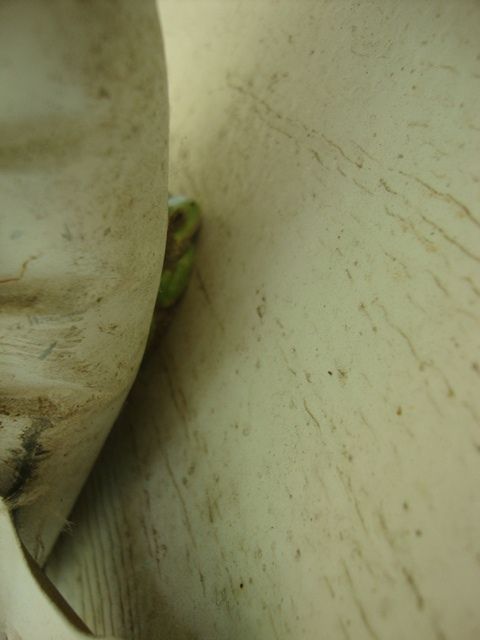
The posture is classic for a treefrog at rest in the heat of day: feet, hands, arms and legs tucked under the body in a tight ball. It is important to note that amphibians have incredibly thin skin (only several cells thick in some places). This means they can absorb water readily through their skin (and have little need to drink water with their mouths). BUT just as they can absorb water through their incredibly thin skin, they can just as easily lose water across this same membrane. Thus, dehydration is a serious concern for amphibians.
So...the posture above reduces the amount of the body's surface area exposed...thus, reducing the potential for evaporative water loss. In other words, the less skin you have exposed to the air, the fewer avenues there are for your body water to evaporate into your surrounding environment.
Once the sun starts going down, though....the posture changes from one of resting to one of hunting. Note the legs and toes are splayed in this posture, which is neccessary for springing at unwary moths. Obviously, the potential for water loss is greater with this posture, which is the reason why they usually reserve it for the cooler evening hours.
Treefrogs on our glass once more!
Cope's Gray Treefrog is not the only species that hangs around the back porch.
This weekend, we found some rather sizeable piles of scat.

So...it was clear we had a critter despositing scat on the back porch. At first this made me alittle uncomfortable, given all of the feral cats, raccoons, and skunks around here, and the potential for them to transmit any number of nasty tapeworms, and roundworms through fecal material. The size of the scat and the chitinous parts from insect exoskeletons within didn't scream mammal scat to me (although mammals will eat insects and the scat was bigger than what I thought a toad would typically excrete). Yet, we were still thinking perhaps this belonged to a toad. During the dry spell, my wife found an adult American Toad (Anaxyrus americanus) burrowed into the soil of a potted geranium on our back porch. The pot was a good 6 inches high...which is a heck of a leap for this little guy...but it must be worth the trouble to have access to the moisture and insects on the back porch. So, it was plausible to assume the scat pictured above came from the warty little fella in the flower pot.
The biggest problem with the toad theory: there was hair in the scat...which indicated it was deposited by a mammal.
So...what to do?
Well, as any self-respecting camera trapper would do....when life presents you with a wildlife mystery, you stick a camera over it!
After one night of the camera on the deck facing the geraniums, I got these....
In summary, three important points:
(1) We can safely say we have a toad living on the back porch and he is eating a ton of insects....
(2) Upon further inspection, I believe the hairs were from our dog (a Great Pyrenees) and incidentally ingested by the toad as it grabbed bugs of the porch.
(3) something the size of a toad was large enough to trigger the camera! This opens up lots of possibilities for future camera trapping endeavors!

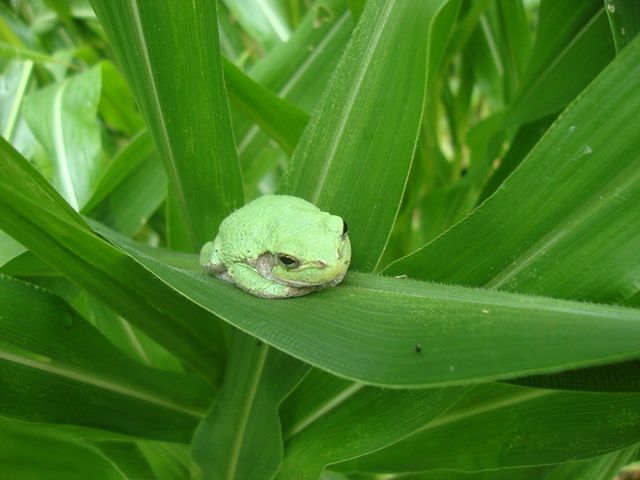
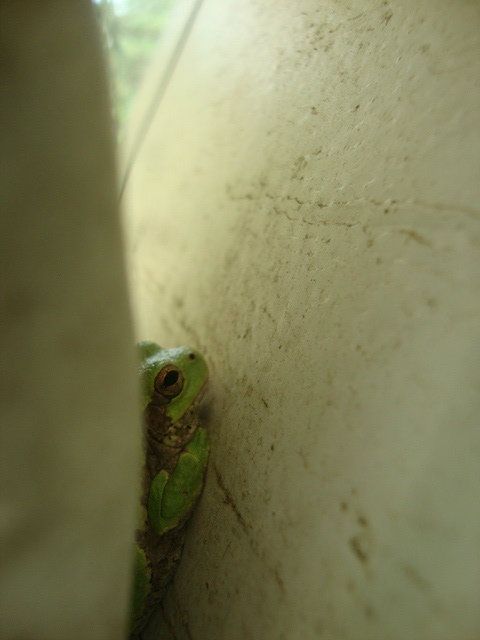
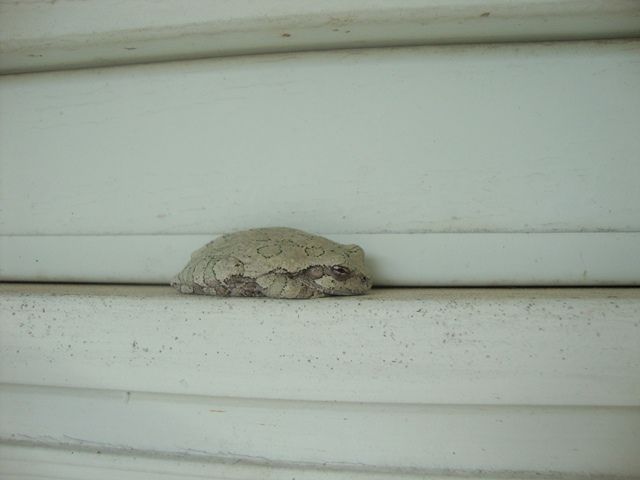
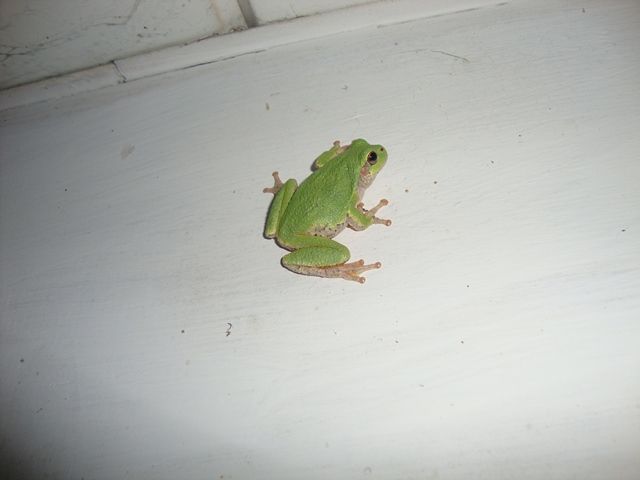
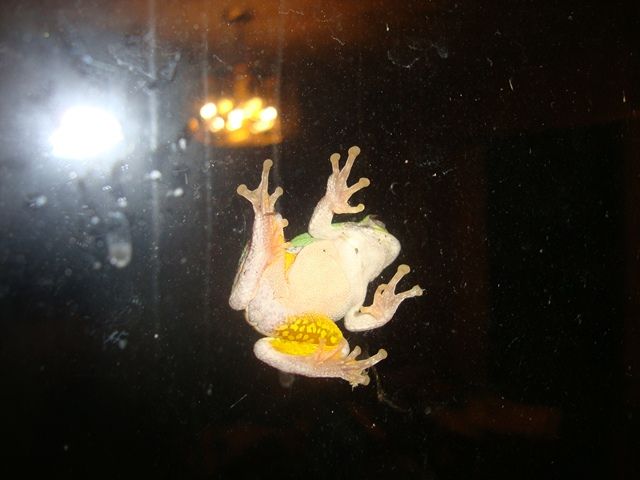
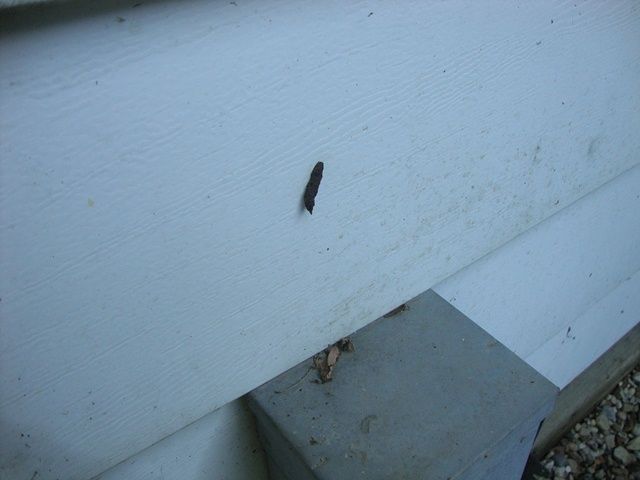
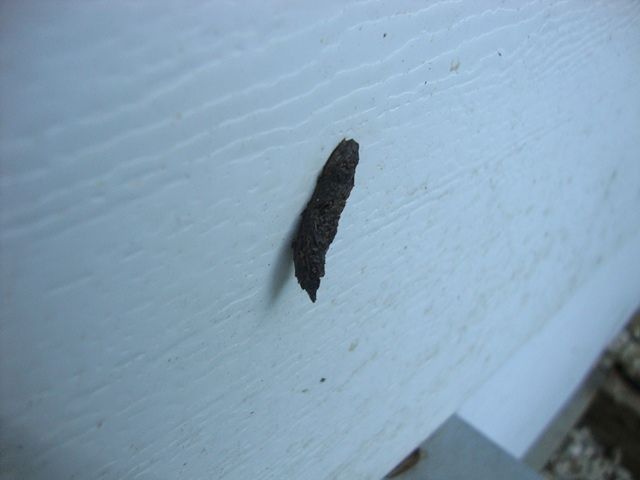

Assuming that this was a passive IR sensor, which means that the toad was also warm enough, above ambiant air temps, to trigger the IR sensor. Pretty neat. First time I have seen an amphibian trigger a camera. People get them in images but there is usually something warm blooded that did the actual camera triggering. That does not appear to be the case with your toad. Neat.
ReplyDeleteHey JK!
ReplyDeleteYeah it was a passive IR sensor (Ltl. Acorn 5210a), with the sensitivity set to "high". But movement can also trigger the cams, so I'm thinking that had alot to do with me catching this critter? Still, you have to be close, and within the field of detection for the motion to trigger the camera or the heat to trigger the camera. It was also positioned on a flat surface at the exact level of the toad, so perfect for the critter to break the sensor's area of detection.
Interestingly, I have numerous video clips of him from over a roughly two hour period on that evening. These aren't even all of the clips I got, just the ones I posted. So I would assume catching him on the camera isn't a fluke, but don't know how easy it would be to replicate the set up in a more "natural" setting for amphibians.
I've seen research manuscripts focused on using Reconyx cams to monitor salamander underpasses. They set their cameras to automatically take pictures every number of seconds (and not rely on the motion/PIR detector to be triggered). Haven't seen alot with cameras and cold-blooded critters otherwise.
As always, thanks for reading!